
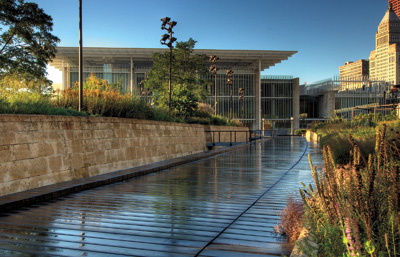
The Art Institute of Chicago's New Modern Wing
Architects all over the world are extremely jealous of Renzo Piano . If he weren't such a nice guy, there would probably be an AIA contract out on him. As it is, Piano keeps getting the great museum jobs and cities keep getting very nice places to look at art.
But Chicago has them beat. Even though I absolutely love the undulating green roofs of the California Academy of Sciences in San Francisco which remind me of the developing breasts on a young girl and the elegant minimalism of the Menil Collection in Houston, the Modern Wing addition to the Art Institute of Chicago is one of those spaces that makes you catch your breath.
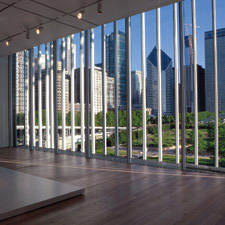
View of Chicago Skyline from the new Modern Wing
Yet Piano, softspoken and charming, known originally for his collaboration with Richard Rogers on the Centre Pompidou design,, has gone on to become this generation's architectural Starbucks.
Not that Starbucks. Not the one you think of as ubiquitous, expensive and annoying.
No, I mean the original one where we felt like a little bit of Europe had descended on our corner, where we learned communing with people over something as simple as coffee was pretty terrific.
The quality of Piano's work is occasionally affected by regime changes, shrinking budgets and city restrictions, and maybe also a little bit because he has been so busy. But Chicago has come out in its stealth, second-city style and unveiled a total winner.
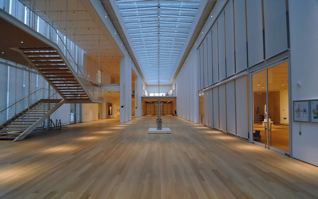
Griffin Court
All you have to do is walk into the white light filled central Griffin Court and understand everything about Piano: the space is all about light, a long turbine-style hall that reminds just a tad of the much darker Tate Modern but which instead pours out on a large clerestory glass view of ... Frank Gehry's titanium bandshell. What other architect would give pride of place to another man's work?! Yet the space is an architectural folly of its own, an echo of the very times when we could afford to have a show-off building that did nothing really functional but be beautiful.
All the galleries are behind doors or in reveals, so the space is just that -- a wingless, grounded airplane that soars by its own merits.
The most extraordinary galleries are the ones that give onto the Millennium Park and the art in those galleries, carefully chosen to be able to withstand the stunning view (only slightly obscured by shades) indeed holds up: Richter, Stella, Agnes Martin, Ryman.
Instead of making huge galleries that confound the viewer so that you don't know where to turn first, the decision was taken to make small, intimate galleries that make you see the art in context, next to other artists that may have informed the work, or been influenced by it. And instead of telling you how to look, it's hung so that you make that discovery yourself.
Of course the curators had a big hand in this and I take nothing away from their excellent work. But Piano has been listening to them.
This museum has a great deal in common with the San Francisco Academy of Sciences roofline, but because of the all white, and the light and the elegant refined construction material, you feel like you're in a white circus tent, with thin metal guy wires ready to take you up to the top so you can spin around a little. Or, if you prefer a more grounded image, a bit like a Calder -- all wire and spit and polish and smiles. The simplicity and restraint is just so refreshing!
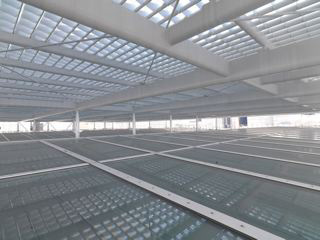
The "flying carpet" roof
My favorite spaces besides the Griffin court: the Pritzker garden, an elegant flying-carpeted covered space with natural plant material and lime green chairs and the undulating walking bridge that deposits you on the second floor. (Check the website in coming weeks for images of these spaces not available at post time).
People who have the luxury of living in Chicago can return to take in their favorites but I had to look had the art at the same time as the building. Had is a poor word choice. The permanent collection of the Art Institute is so strong, and looks so beautiful against these white walls that you are very jealous that you don't live in this city and can commune with these works (and the Gehry bandshell and the marvelous Louise Nevelson-encrusted Harris Concert Hall) more often.
Some favorites:
An early, colorful Jackson Pollock

Jackson Pollock
A lush Paul Delvaux
Paul Delvaux
A pensive Matisse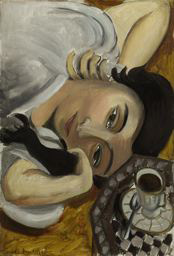
Henri Matisse
A Picabia that could have been painted today
Francis Picabia
And a Richter in an end gallery that makes you think this lady descending the staircase could be just outside the door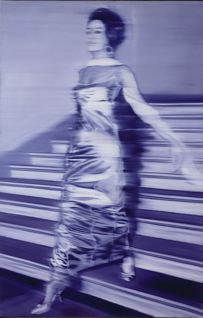
Gerhard Richter
The Modern addition says "Look at me, don't take your eyes off me!", yet lets you look away. This is an architectural hat trick by one of the few starchitects who is not arrogant, who is willing to share the glory with the important stuff hanging on the walls.
All images courtesy of the Art Institute of Chicago
